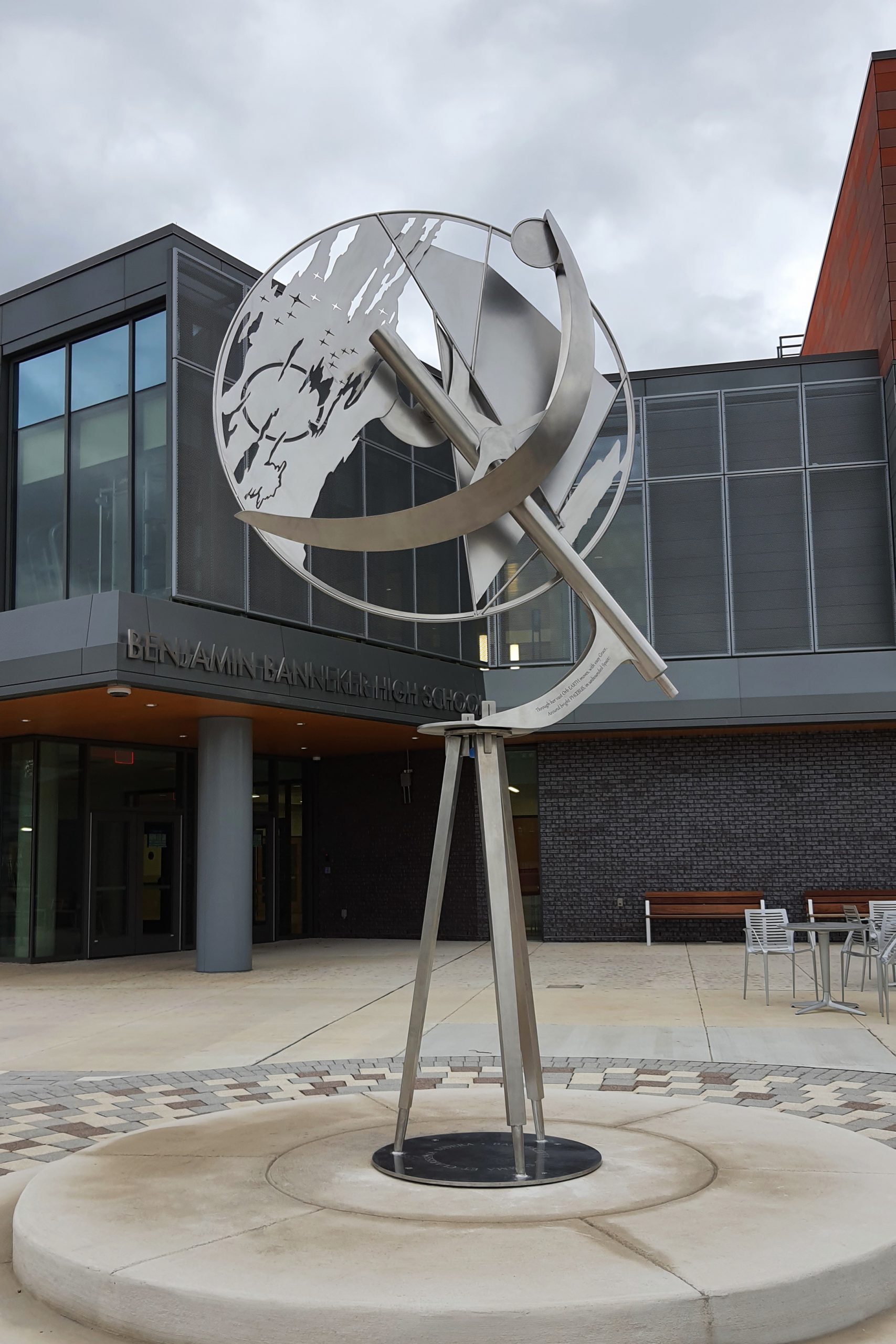

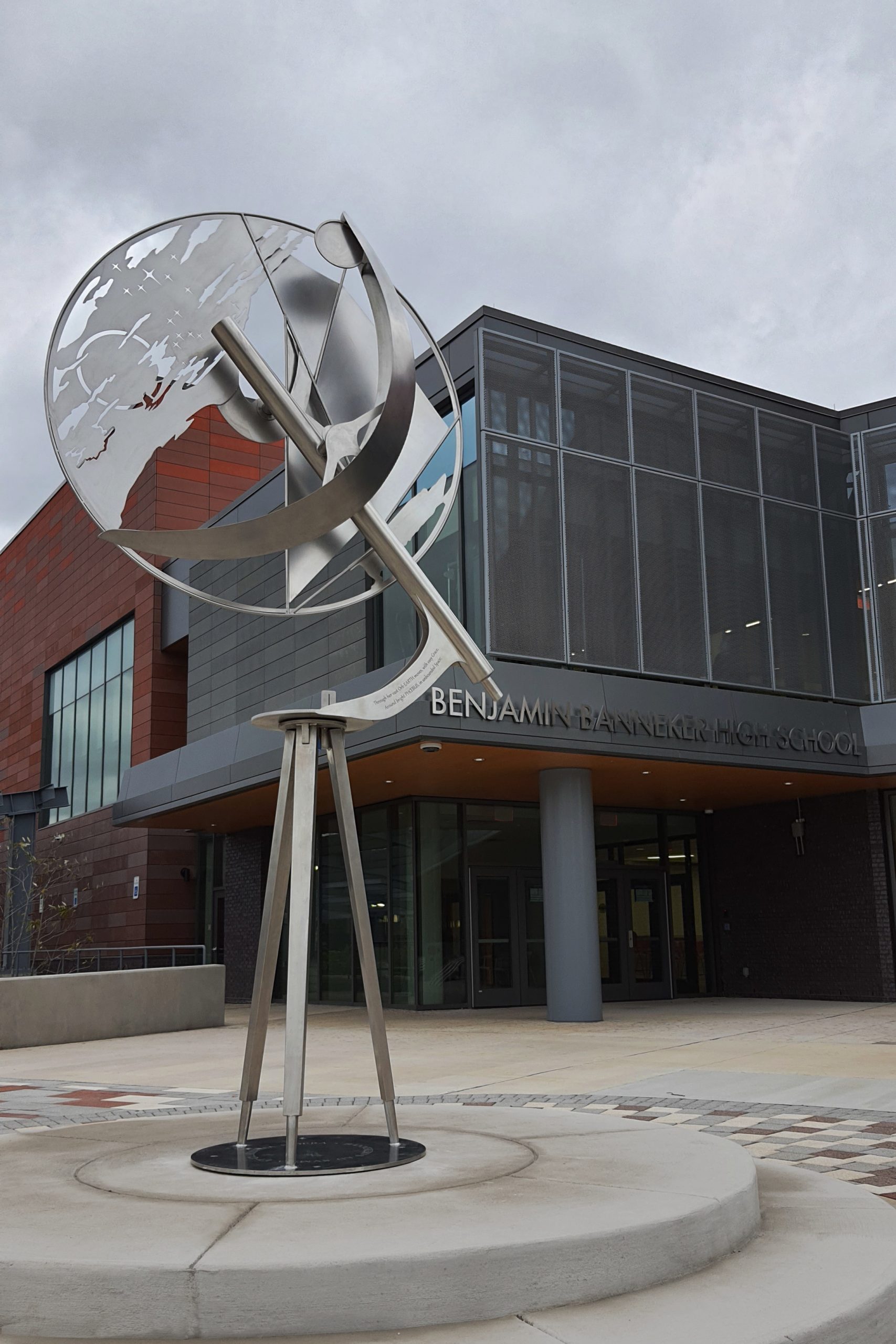
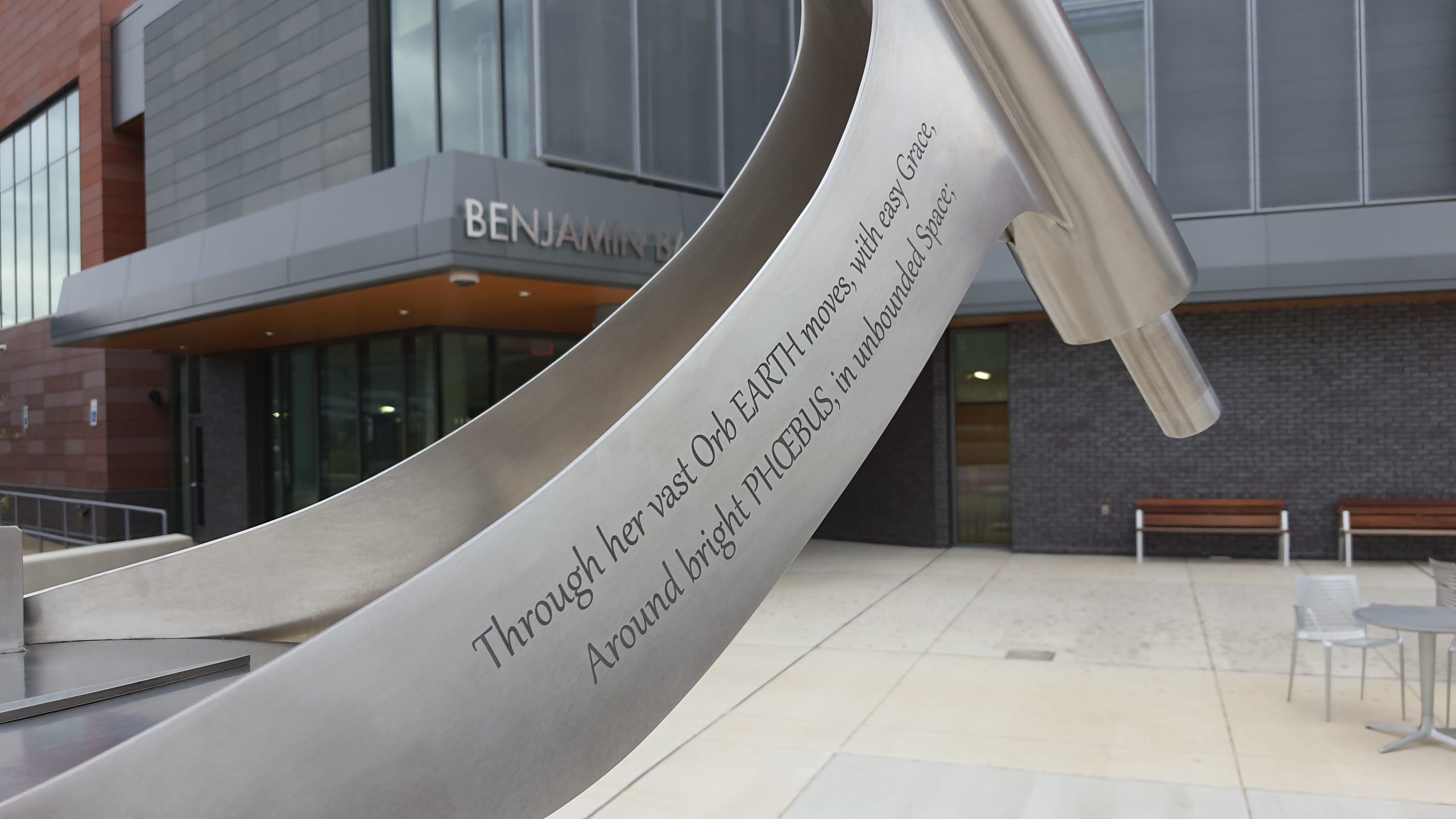
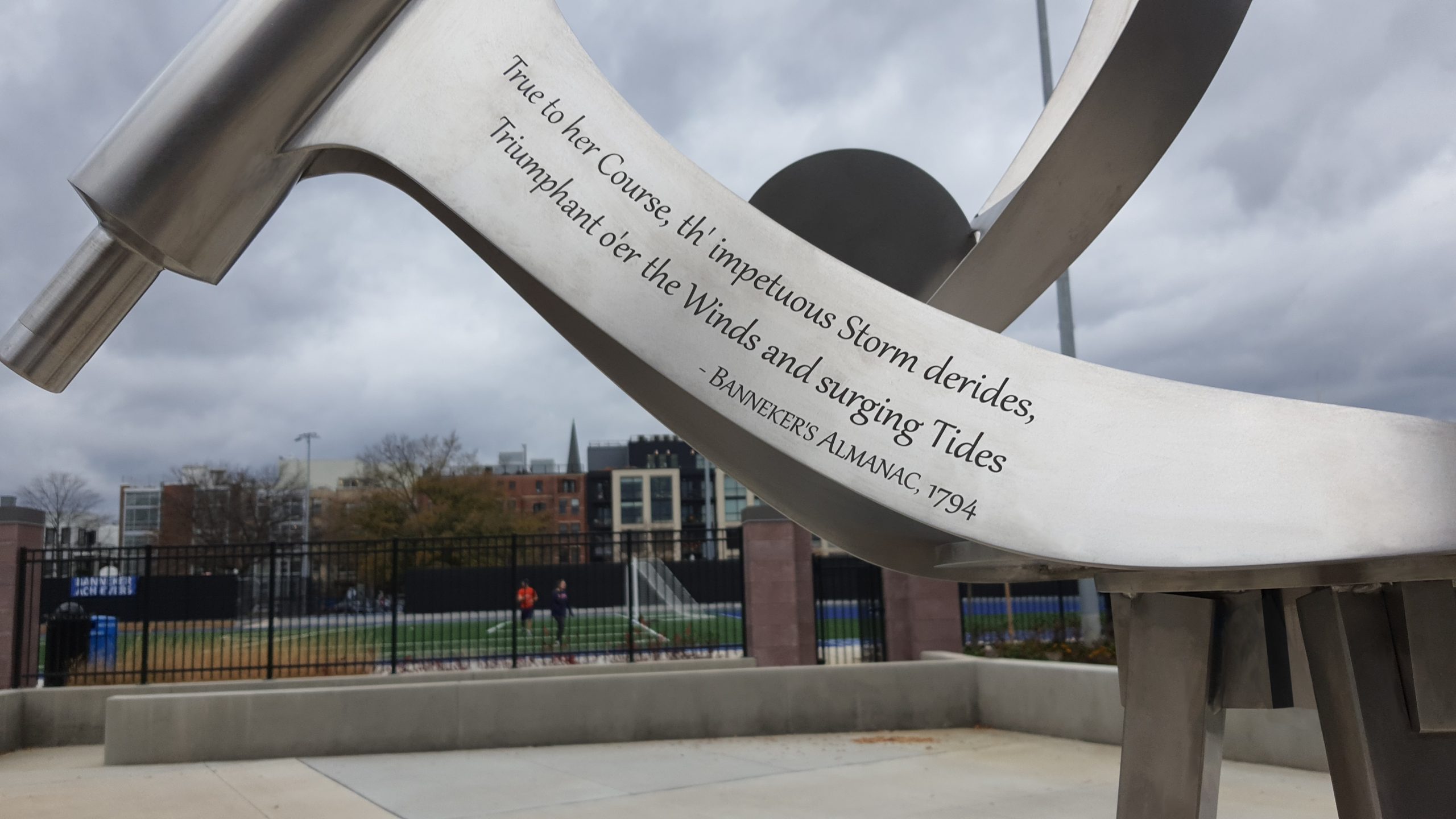
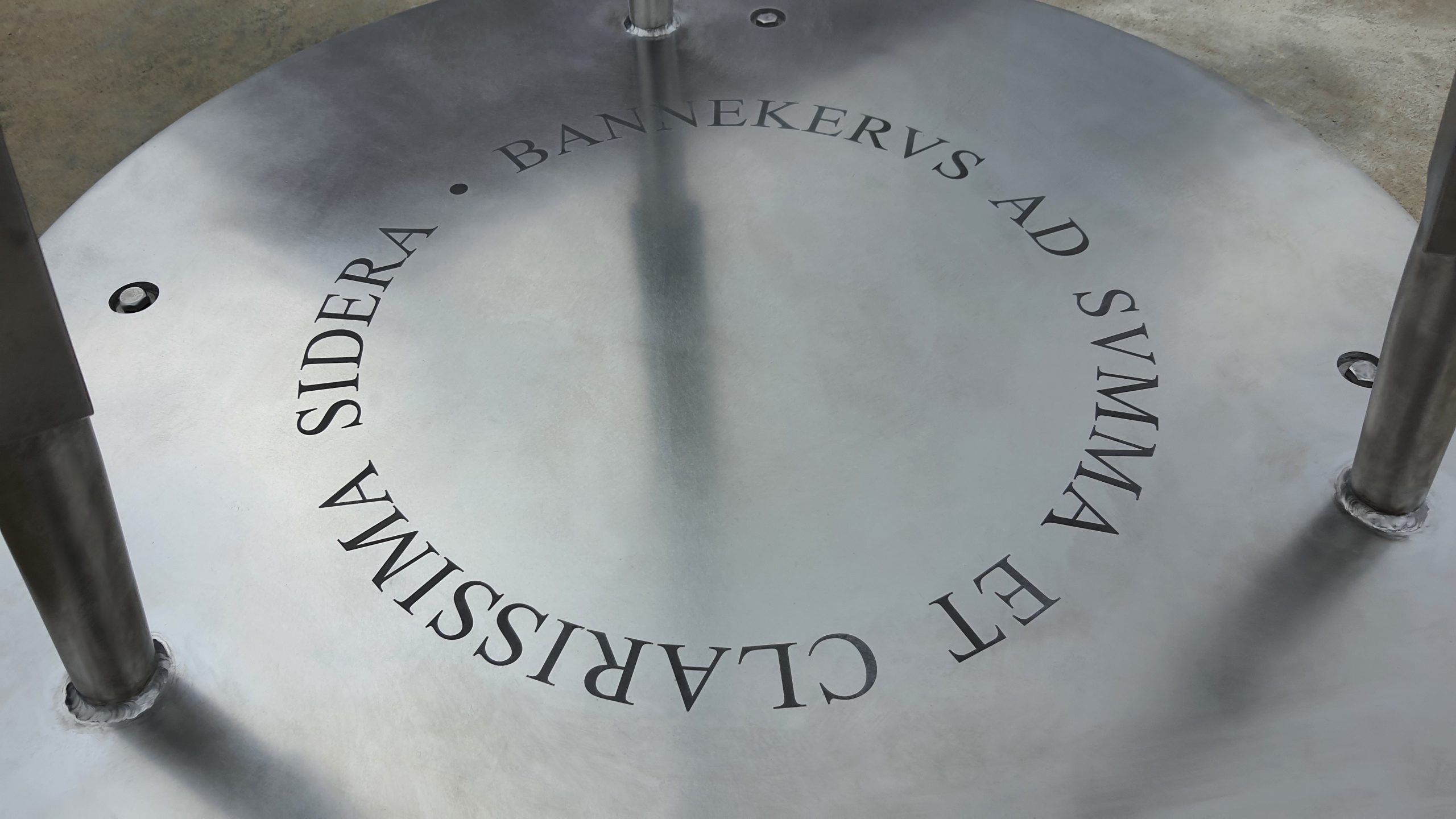
Client: Department of General Services, DC
Location: Washington, DC, United States
Completion date: 2021
Artwork budget: $65,000
Project Team
Sculptor
Eric Peltzer
Artist Coordinator
Doug Dorner
DGS
Arts Program Manager
Sandy Bellamy
DGS
Overview
Kinetic sculpture inspired by African American scientist, astronomer, and almanac author, Benjamin Banneker. Banneker, a free descendant of slaves, participated in the founding survey of Washington DC, and was also a clockmaker and farmer of the Colonial and Early Republic United State. This is a public high school for academic high achievers in a largely African American neighborhood of DC. This 12′ high kinetic sculpture moves on three axes of motion. It is finely balanced to move in the slightest breeze. Each element of the sculpture refers to an aspect of Banneker’s achievements. Engravings on the base and rotating pieces celebrate his achievements. Starting from the base, the sculpture rests upon a tripod modeled after typical surveyor’s equipment of the 18th Century. Atop this tripod is a stylized surveyor’s compass with sights. A telescope shape refers to Banneker’s main interest, astronomy. The large circular shape represents a clock face, and shows a period sailing vessel and stars, representing the tide tables that were part of his almanacs. Finally, a crescent moon and sun refer to an eclipse that he famously predicted with high mathematical accuracy. The movement of the shapes allow the sun and moon shapes to occasionally overlap as in an eclipse.
Goals
My goal was to celebrate the life of a man who achieved much despite a social structure stacked against his race, in an era of slavery. Banneker is perhaps the most renowned African American of the early US Republic, yet the name is not widely known to many in the US today. By illustrating and representing his activities and achievements in an engaging and dynamic way, I hope to in some way perpetuate his memory and allow it to continue to inspire others. Additionally, I hoped to celebrate and draw attention to the achievements of his near contemporary Phillis Wheatley, a freed slave who was the earliest published black woman in America, and whose name is on a building next to the high school, an historic YWCA club. The inscription is in Latin, a prime language of science at the time, and I like to think the students will puzzle over it somewhat and have to research what the translation is. It means, “Banneker, to the highest and brightest stars.”
Process
The project was the winning entry of a national public art search. Three finalists presented full design concepts. The high school was being relocated and completely rebuilt, and the architects and designers asked for artwork in celebration of the school's namesake. This required a fair amount of historical research into Banneker's life. I found his story to be quite inspiring and surprising, as I had known very little about him previous to this. For this design I decided to make every part of the sculpture quite specifically symbolic to aspects of his achievements. This is an unusual approach for me, as most of my work is quite abstract and non-referential. In addition to books and reference articles, I visited the Smithsonian's new Museum of African American History and Culture, as well as the Banneker Historic Park in Catonsville, MD. Through all of this research I also became intrigued with the story of Phillis Wheatley. One of the highlights of my research was to discover that an uncredited poem that appeared on the cover of Banneker's Almanac of 1794 was in fact written by Phillis Wheatley. It was this poem I used as one of the inscriptions.
Additional Information
Fun facts: The sculpture can be set in motion by hand. It is made of stainless steel. People ask if the "telescope" works. You can look through it, but there are no lenses, so no, it is not a working telescope. The telescope is 5-1/2' long and this refers to the zenith sector surveyor's telescope in the Smithsonian Institution that may have been used by Banneker in the survey of Washington, which is also 5-1/2' long. The angle of the telescope is 39 degrees, corresponding to the north latitude of Washington DC, which a celestial telescope would be mounted at on one of its axes in order to track objects moving through the sky. Determining the exact north latitude of a position was Banneker's primary task during the survey. The constellation in the scene is Sirius, containing the brightest star in the heavens, and an important star to the Dogon people of Africa. This is a group from which it is thought Banneker descended through his paternal grandfather.